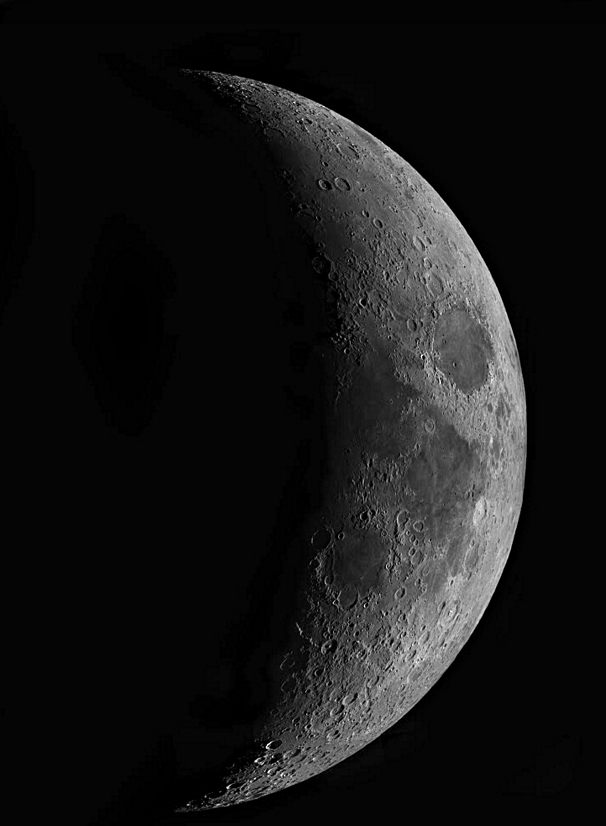Some years ago, I decided to acquire a larger refractor than my FS102, f/8, fluorite doublet (now a ‘cult’ telescope). The cost of refractors climbs rapidly with aperture so I limited my search to those with objective around 5 inches or a little more (127 mm to 140 mm). The choice is far greater now, but then Altair Astro were selling a air-spaced, 127 mm, triplet apochromat for just over £3,000 whilst the Technical Engineering Company (TEC) had on offer an oil spaced, 140 mm, triplet for around £4,500 (Now £7,600.) As outlined below, I did like the idea of an oil spaced objective as these can give higher contrast images than an air spaced triplet. I had come across a new European company called Cff telescopes, based partly in Hungary where the oil spaced objectives are made and partly in Poland where the telescope tube is manufactured and final assembly is undertaken. I was able to acquire a 127 mm, f/7, refractor for £3,350 – the last of their first run of 127 mm aperture refractors having lens no 10. [Their nearest current refractor, having an aperture of 135 mm, now costs over £6,000.] The telescope’s tube is both flocked and baffled and is equipped with a Starlight Instruments focuser.
Why an Oil Spaced Triplet?
It is worth comparing aspects of the oil-spaced objective used in the Cff and TEC refractors (as well as the Baader Travel Companion) with the more common air spaced triplets. In an air spaced triplet the optical designer can adjust the radii of curvature of the two surfaces of all three elements so giving 6 degrees of freedom. This, coupled with the ability to choose the separations between the elements, gives him two further degrees of freedom, makes optimising of a design relatively easy. In the case of a oil spaced triplet there are only 4 degrees of freedom (the radii of curvature of the outer two element surfaces as those of the inner element are then determined). The element separations are obviously fixed to be zero. It is often the case that to achieve similar image quality to an air spaced triplet one lens surface may need to be made aspherical. One might then wonder why one should design oil spaced triplets. There are three advantages. Firstly, due to the oil layers between the elements, the only significant light reflection can be from the final internal lens surface whereas in an air spaced triplet there are five internal glass air interfaces within the lens. [For some time, Astro-Physics, offered some of their telescopes with either air or oil spaced objectives. They recommended the oil spaced version as they said that 6% more light was transmitted by the lens. I suspect that some of that 6% will be scattered and would reduce the overall contrast slightly.] Secondly, the oil layers will fill any minor blemishes in the internal lens surfaces so greatly reducing any impact that they might have. (In the same way that a thin layer of oil on a rough surface effectively smoothes it.) These help produce a better objective. The third, and perhaps the most important reason is to do with the lens elements reaching ambient temperature when brought outside to observe. The internal element of an air spaced objective has air on both sides which limits the rate at which it can lose heat so these must be bought outside to acclimatise sooner. It can be worse than this as, if the night is cooling quickly, the central element may never reach ambient temperature.
One result of the oil spaced objective and the tube’s internal flocking and baffles is that the overall contrast of the Cff 127 mm refractor should be very high. An extreme test of the overall contrast of a telescope is to image a TV aerial against a bright sky as seen below. I think the image speaks for itself. As one would also have hoped, there was no trace of chromatic aberration.
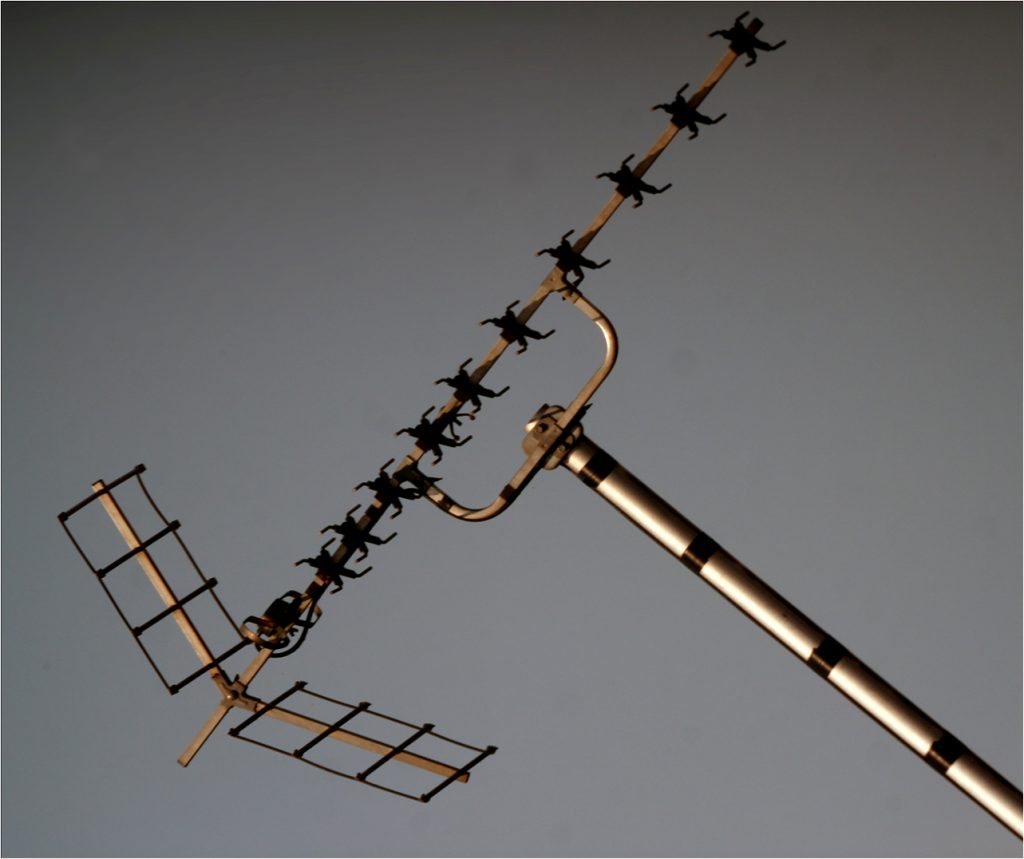
For use with astrocameras
In any standard refractor the outer parts of the field will lie closer to the objective, a problem called field curvature. This does not really matter when visual observing but does so when astroimaging. Apart from its use for lunar imaging, I can use the telescope either using a TS Optics 2 inch field flattener to image with the full focal length of 889 mm at f/7, or with a Televue x0.8 focal reducer/field flattener to give an effective focal length of 711 mm at f/5.6.
Example Images
Using the telescope with a Teleskop Service 2 inch field flattener and Altair Astro 294c camera.
This may well be the best of all field flatteners and can be used with a wide range of focal lengths by adjusting the (large) separation between it and the camera sensor – 108 mm in the case of the 889 mm focal length of the telescope. Unusually, the doublet corrector actually sits within the focuser barrel. The field of view using the Altair Astro 294c camera is 1.22 x 0.8 degrees. Initially I was confused by the size of the field of view given by submitting an image to Astrometry.net. My camera is said to have a Micro 4/3 sensor whose generic size is given as 17.3 x 13 mm. Using 17.3 mm to calculate the field width gives a smaller field of view than that given by Astrometry.net. However it turns out that the sensor in the 294c camera has a sensor size of 19.1 x 13 mm so is actually 10% larger in size than a standard Micro 4/3 sensor. Calculations and results are then in agreement.
First light with the telescope and camera was the taking of an image of the Pleiades Cluster when the waning gibbous Moon, 81% illuminated, was in the same quadrant of the sky so expectations were not great. A total of 470, 5 second, exposures were taken giving a total exposure of 39 minutes. Such a short exposure time was chosen so that stars could not possibly be trailed by the non autoguided mount. The frames were aligned and stacked in Deep Sky Stacker and then processed in Adobe Photoshop to give the following result.
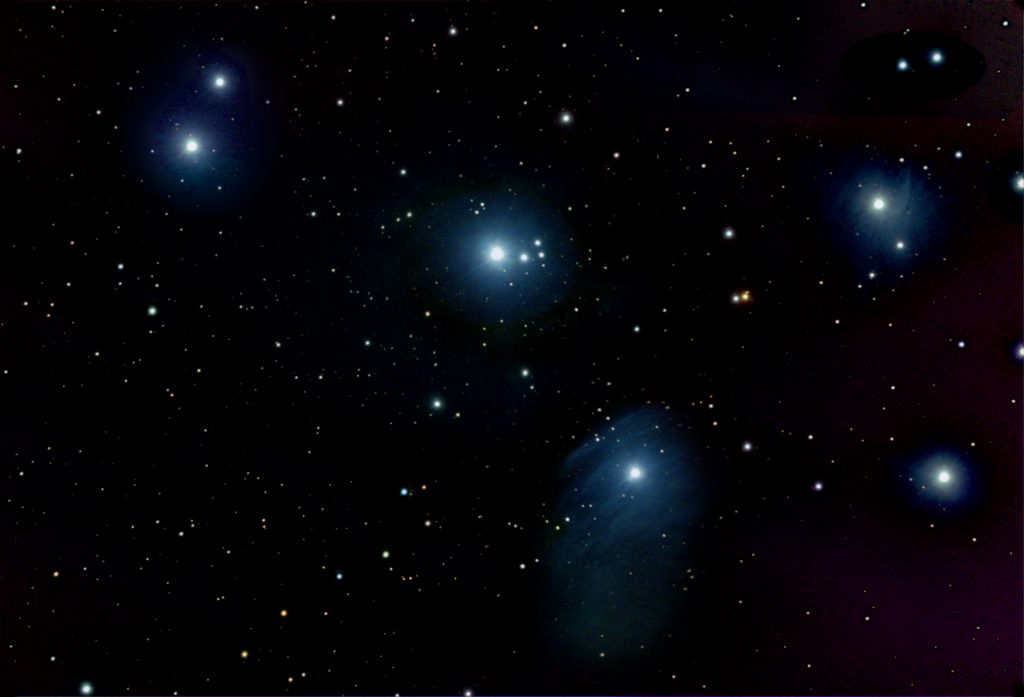
The stars and their colours were both pinpoint and accurate with absolutely no trace of chromatic aberration. Given the relatively short total exposure and the moonlight, one could not have expected to capture much of the nebulosity.
Comparison with the Digitised Sky Survey
I think the quality of the telescope is indicated by the image below which is a comparison of a very small crop of the above image showing the pair of stars over to the right and a little below of Alcyone (with the star triplet) with the same stars imaged in the infrared by the 1.24 m Schmidt Telescope in Australia. I think the the image speaks for itself.
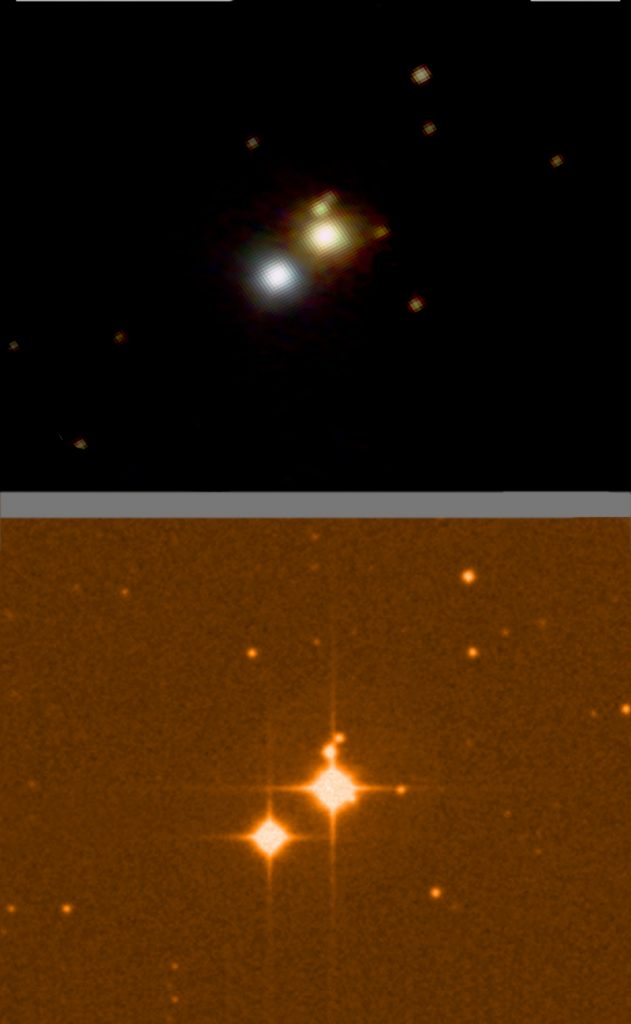
I realised that I had previously taken a 4 hour total integration time image of the Pleiades which showed the nebulosity well but the stars not nearly so well. For interest, I used Starnet++ to remove the stars from this image and then added the nebula into the image taken by the CFF telescope above. The result is quite pleasing.
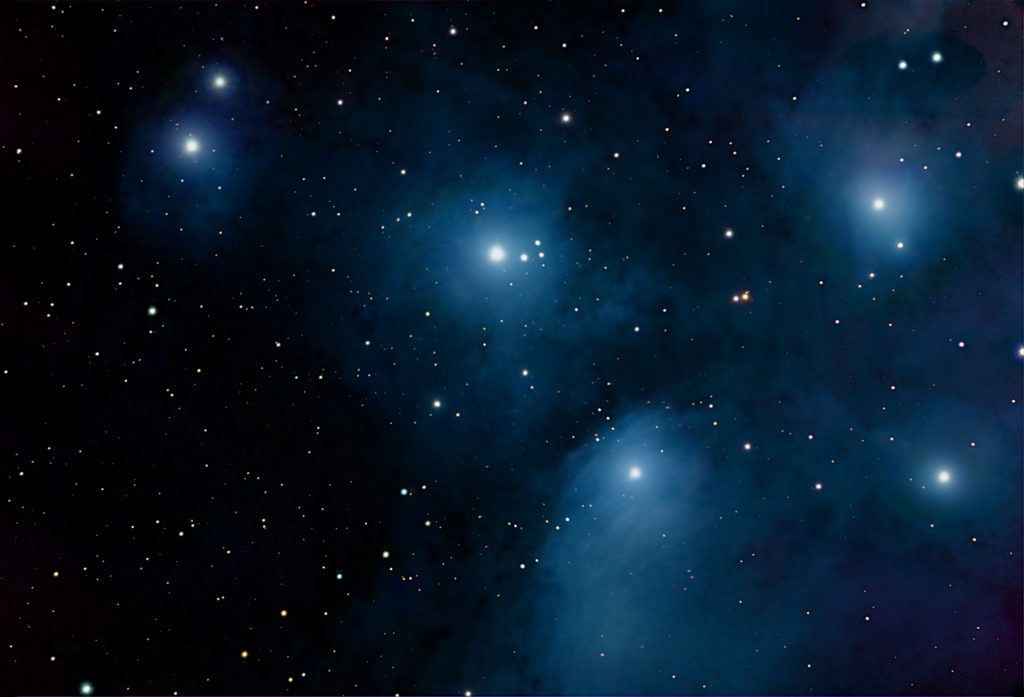
M35 and the more distant open cluster NGC 2158 imaged using a full frame Nikon D610 camera – one of my very best images.
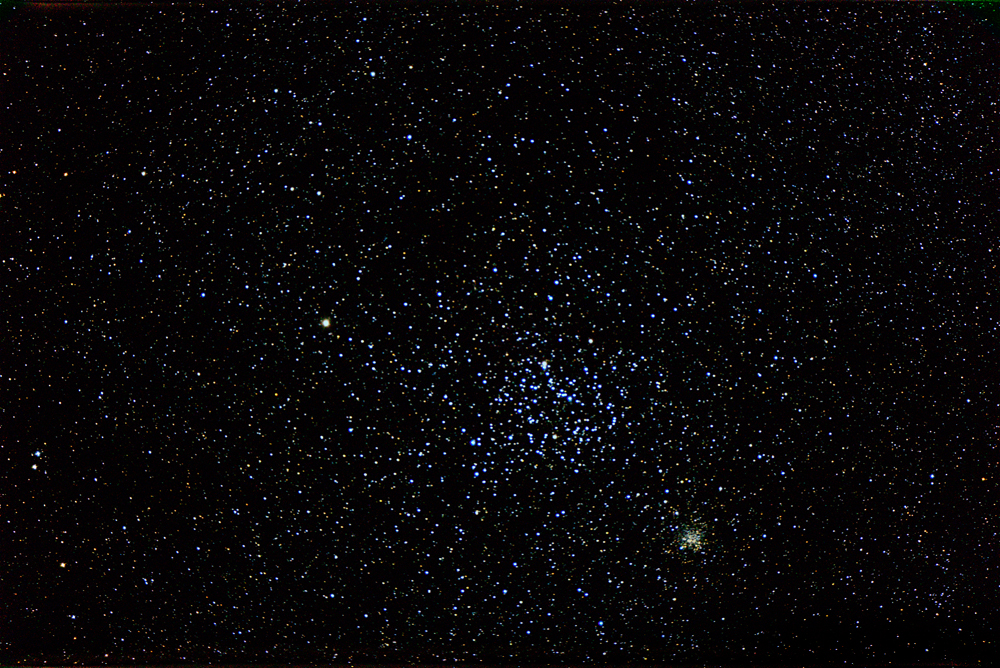
The stacking process had lost the colour of the two red giants (orange) in the field which had been obvious in a single frame, so in the crop below, their colour had been restored from a single frame.

M41 imaged with an Altair Astro 294C PRO TEC, Micro 4/3, cooled camera
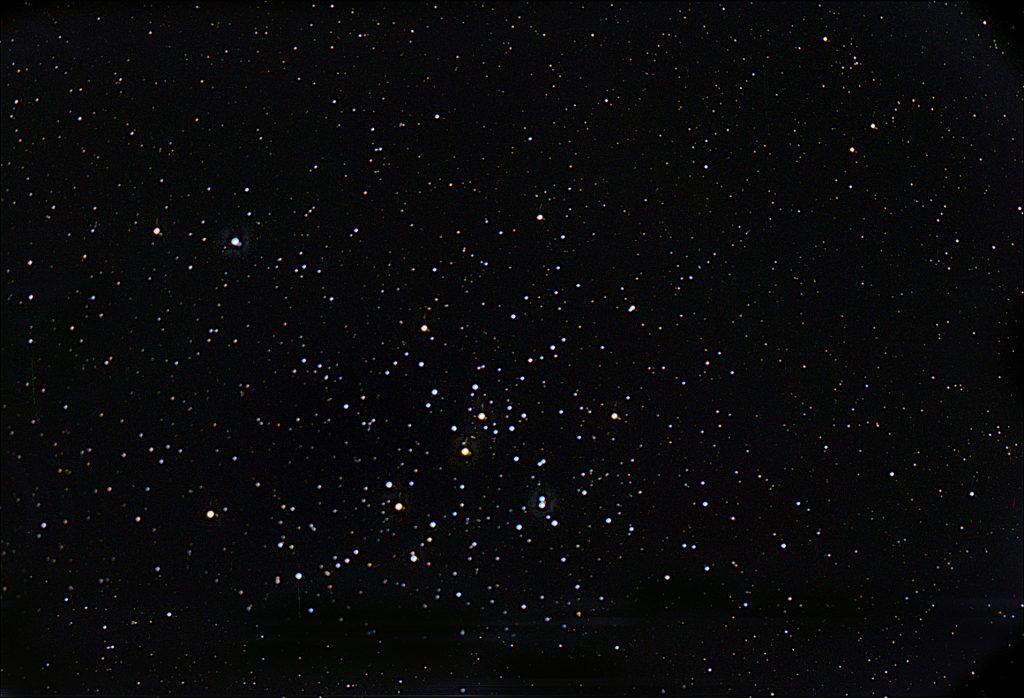
Using the telescope with a Televue x0.8 focal reducer/flattener
Sadly no longer available, this was optimised for telescopes of focal length between 800 and 1,000 mm – so ideal for this telescope. The field of view is then increased to 1.58 x 1.07 degrees. Unfortunately, almost as soon as I began to image the Pleiades, the clouds came over and I only was able to acquire 21 frames. However I was a bit surprised that, though the nebulosity could not be captured, the star field was excellent so it is worth showing. The image quality across the frame was again superb signifying to the quality of both the telescope and Televue reducer/flattener.
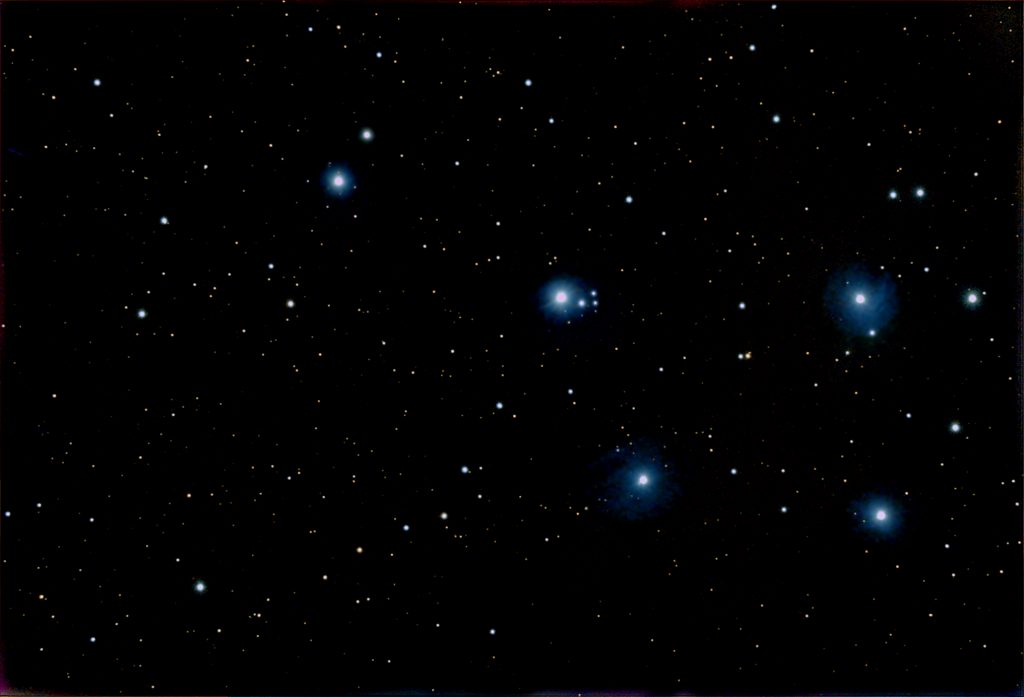
Imaging the Moon in the infrared using a Point Grey Chameleon webcam
The webcam subtends 0.35 degrees on the lunar surface so a number of video sequences had to be taken which were processed in Registax 6 to produce ‘panes’ which were then composited using Microsoft ICE.
